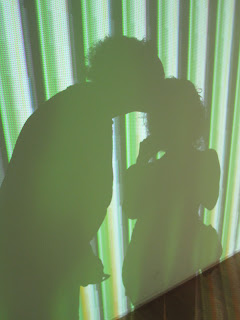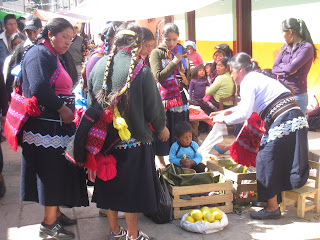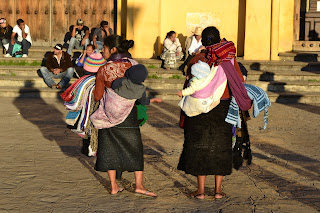It is 3am on a Tuesday, 90% humidity, and we are in a sweaty crowd of Portenos (locals) dancing like crazy. The smell of weed is everywhere. But it’s the sound from the stage that has us spellbound. A dozen drummers, kitted out in red and black dungarees, are throwing down beats like it’s a drum ‘n’ bass club. Hands blur over bongos, drum sticks slice the air, dreadlocks bounce in time. In charge is a conductor, a true maestro, who elicits drum rolls that pass from one musician to the next, like claps of thunder moving across the stage. The beat pulses through my chest like I’m standing in front of a speaker and we all jump in time. It is Carnivale in Buenos Aires – and La Bomba de Tiempo is the hottest ticket in town.
I keep telling Dan this trip is our last hurrah. That soon enough, the bubble of youth we’ve been clinging on to will burst, and we’ll be sitting in a weatherboard house in suburban New Zealand with a few sprogs running around, wondering how we’re going to pay for it all. And so, while we can, we must party like we are 21. And Buenos Aires is party central. This is our last chance to live it up. Our 30-something bodies may not like it, but we will push through it. And so we do.
La Bomba de Tiempo is just the start. On Friday night, we drag two young Kiwi boys and some even younger Americans out in the posh part of BA, Palermo, where we drink the local mix of Fernet and Coke (a foul mix of herbal cough mixture and rat poison) and dance to Reggaeton until we can’t stand up. The next night Dan and I push on alone to Milion, a lush cocktail bar in a gorgeous colonial mansion, before descending into a club hidden below a dank Irish pub, which cranks out unexpectedly brilliant tunes. By 4am we’re exhausted – and most Portenos are only just hitting the dance floor. It takes some time to get used to this lifestyle: most people in Buenos Aires wouldn’t dream of heading for dinner before 10 or 11pm, and go clubbing around 3am.
Still, this is a city I could live in. Partying aside, it has a very modern, European feel to it. The architecture is stunning, with a centre full of gorgeously ornate apartment buildings. Even every grave in the famous Recoleta cemetery is a small architectural marvel.
There are fabulous art museums: we spend hours in MALBA (Museo de Arte Latinoamericano de Buenos Aires) marvelling at the optical illusions created by the kinetic artist Carlos Cruz-Diez, and we might have spent longer in Fundacion Proa had its special exhibition not been Mexican art (we’d had our fill!)
The shopping is world class – and everyone in Buenos Aires looks like they part with a large amount of cash to look good. It’s a pretty stylish place. Dan is by now so tanned he looks like he comes from this continent – so he spends his time deflecting friendly shop assistants who assume he speaks fluent Spanish and keep offering help. Our Sunday shopping in San Telmo’s antique market even turns into an impromptu party with another group of Carnivale drummers making everyone stop and dance.
And the food - the whole of Buenos Aires smells like a parilla (grill). The steak really does melt in your mouth. But truly, this is the only thing that Argentinians do consistently well on the cooking front. Don’t even think about ordering a salad, unless you want it to accompany a slab of meat (you’ll just end up with a bowl of onions, tomatoes and cheese… wholly unsatisfying.)
A few warnings if you’re visiting this way:
1) - Don’t look up at those fabulous buildings for too long – or you’ll forget to look down at the dog shit. It’s everywhere. For a highly cultured city, Buenos Aires has a very crappy problem to deal with.
2) - Watch your stuff. That Friday night out in Palermo began with dinner at a flash steak restaurant. Dan and I pulled up in a taxi as all hell broke loose at the tables on the pavement: glass shattered, people screamed, tyres squealed. A man had tried to take a woman’s handbag from the back of her chair. She’d stood up yelling, knocked red wine all over the table, and a heroic waiter had run out of the restaurant, picked up a chair, and smashed the back window of the getaway car with it. The robbers escaped, but without the bag. Waiter 1, robbers 0. We toasted him all night.
- Hangovers and humidity are hard work. And so we moved on to Mendoza, for some civilised wine tasting instead…. (ahem.)

































































